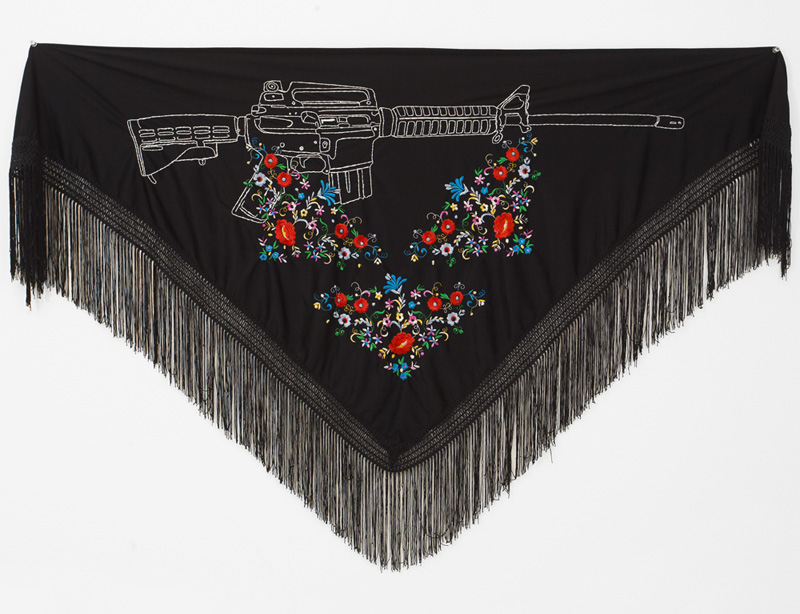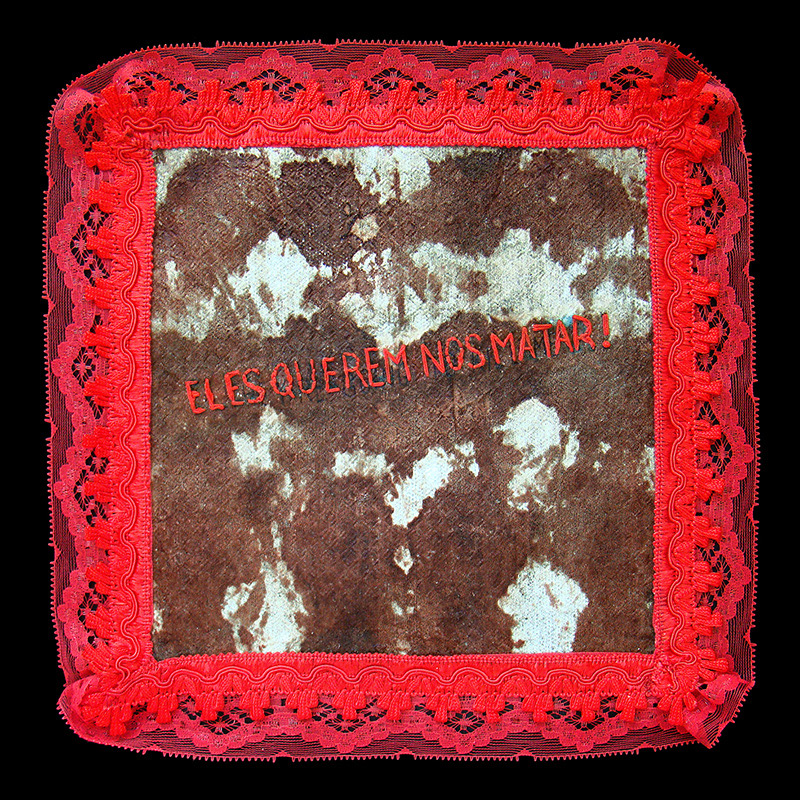Fábio Carvalho
born in 1965, Brazil
“My work will always have overlapping stereotypes of virility, of masculinities, of power and of ornamental, decorative, futile, and frivolous, considered the feminine universe. The masculine universe and productivity, the Cartesian universe and the women’s and leisure universe, the stereotyped vision of society, I want to melt both of them so that sometimes what we end up with is a confusing image.”
Fábio Carvalho resides and centres his practice in Rio de Janeiro, where he is a member of the Almofadinhas collective (Dandys), alongside Rodrigo Mogiz and Rick Rodrigues. The shared focus of this group lies in their dedication to aesthetics perceived as sensitive, delicate, feminine, and artisanal, all employed to question the representation and societal conditioning of gender roles.
In Carvalho’s case, this means the juxtaposition or transformation of stereotypically masculine roles—such as military or sailors—infused with embroidered patterns of flowers, butterflies, hearts, ornaments, jewels, beads, or sequins. The resulting visual effect creates tension, breaks the cognitive consensus, and ultimately challenges what the viewer perceives as feminine or masculine. Historically, embroidery, although performed by males and females, evolved into a practice through which women were disciplined and subdued. It kept them occupied, obedient, and silent. Highly gendered, these learnings were and still are transmitted informally within family circles and traditions, as evident in exchanges between mothers and daughters, and the creation of wedding trousseau, for example. These lessons are reinforced by formal educational institutions, such as schools, in dichotomous subjects and curricula. Men who freely and consciously choose embroidery, stress the social conditioning of women who had limited scope of occupations deemed respectable and suitable to their gender. Carvalho goes one step further when he applies it to soldiers, sailors, or superheroes, exposing a sensitive, affectionate, and vulnerable side of men that has conventionally and historically been ignored.
Carvalho’s art is daring and provocative, particularly in the context of Rio de Janeiro—a cosmopolitan and stimulating environment. However, Brazilian society, including Rio, remains Latin, Catholic, chauvinistic, and conservative. Strict adherence to old-fashioned rules dictates the teaching of gender roles, with society, families, and groups instructing children on how to dress, behave, and play. Gender-based violence is a prevalent issue. At the same time, the political culture and politicians favour a strong-hand policy and military deployment in the war against criminal gangs and organised crime groups. This context sheds a light on Carvalho’s work, which, while seemingly frivolous and humorous, is also subversive and raises questions about whether traditional masculinity serves both society and the individual.
Carvalho has participated in various international biennials, including the XXII Bienal de Cerâmica (Aveiro, Portugal, 2015), TRIO Bienal (Rio de Janeiro, Brazil, 2015), Bienal de Cerveira (Portugal, 2005), and Bienal de Cuenca (Ecuador, 1998). While his works have predominantly been exhibited in Brazil in private galleries and public institutions, they are now part of the collections of the Museum of Modern Art in Rio de Janeiro, the Museum of Art in Peru, and the Wilfredo Lam Center of Contemporary Art in Cuba.
|


